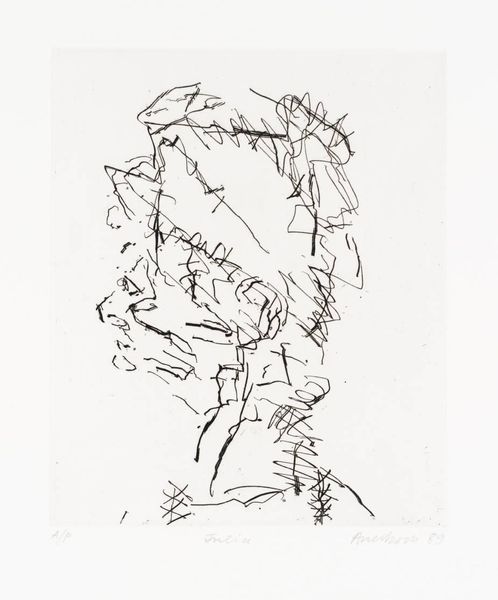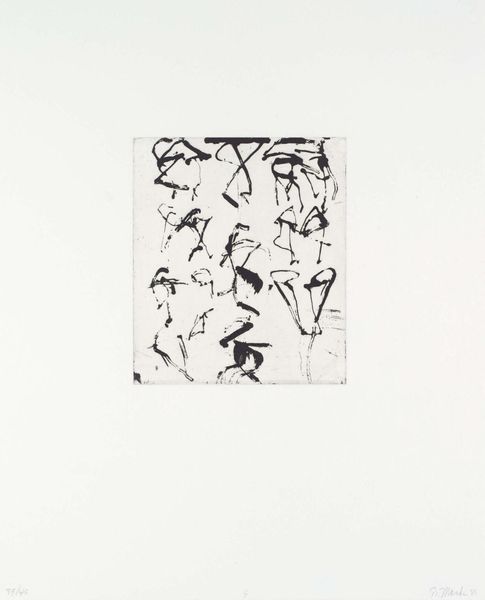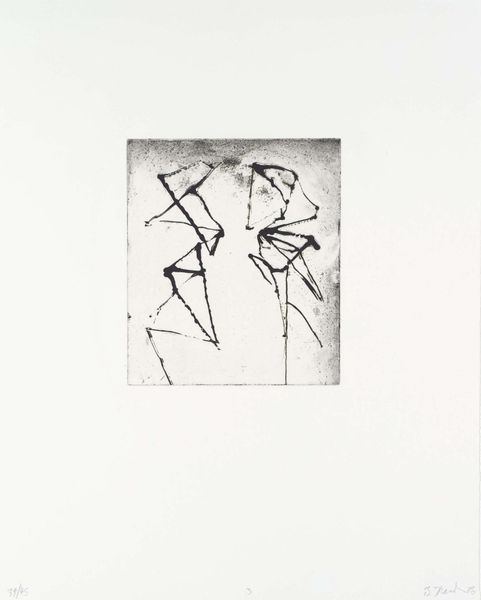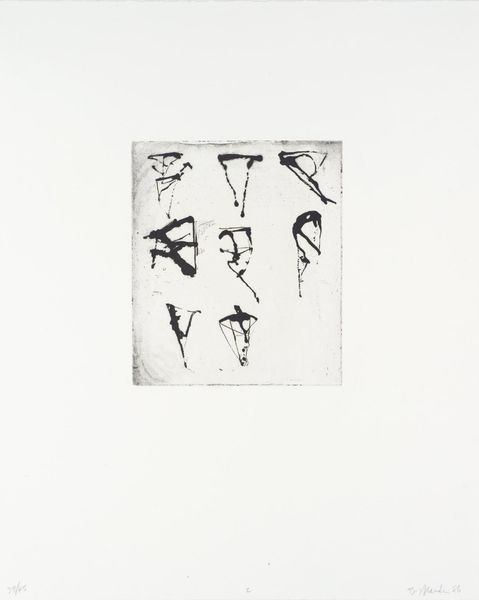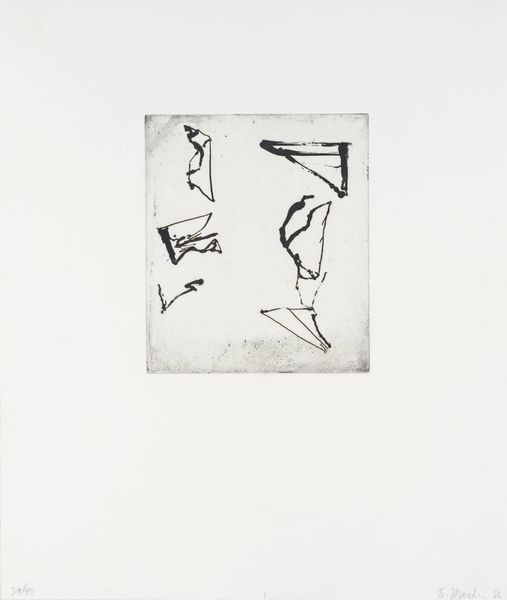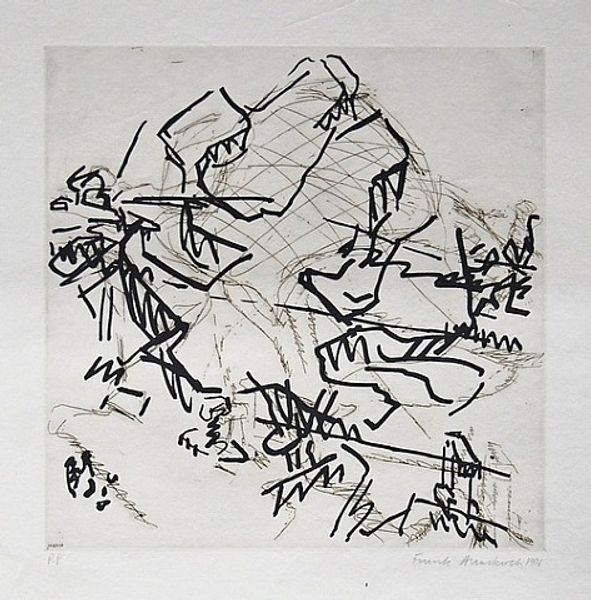
drawing, ink
#
drawing
#
ink
#
abstraction
#
line
Copyright: Brice Marden,Fair Use
Editor: This is Brice Marden’s "Cyprian Evocation," created in 1992, using ink on paper. It’s striking how these looping lines almost appear like a whirlwind on the page. What do you see in this piece, beyond the immediate abstraction? Curator: The "Cyprian Evocation" sits at a fascinating intersection. Marden was deeply influenced by calligraphy, particularly its potential to express complex ideas beyond simple representation. How do you think this engagement with calligraphy challenges traditional Western notions of drawing and mark-making? Editor: I hadn't really considered the calligraphy aspect, but now that you mention it, I can see a kind of symbolic writing emerging. It feels more gestural than narrative, though. Curator: Exactly. This work was created during a period when issues of cultural identity were increasingly at the forefront of artistic discourse. The "evocation" in the title alludes to summoning a spirit or presence. Can you consider this piece as a symbolic conjuring of histories, memories, or perhaps even forgotten aspects of the self? The line becomes a tool to excavate and give form to the intangible. Editor: So it's not just abstract lines, but potentially an active reaching back? Curator: Precisely. Think about the political dimensions inherent in abstraction during the 20th century. By rejecting clear representational imagery, Marden could sidestep direct political commentary while still engaging with powerful emotional and intellectual territories. Do you think it achieves that? Editor: I think so, yes. Looking at it that way gives it a much greater sense of depth than I initially perceived. The idea of line as a political act, however subtle, is definitely something to consider further. Curator: Absolutely, and seeing art in its historical context is crucial. Every line tells a story, and often, many intertwined stories.
Comments
No comments
Be the first to comment and join the conversation on the ultimate creative platform.

